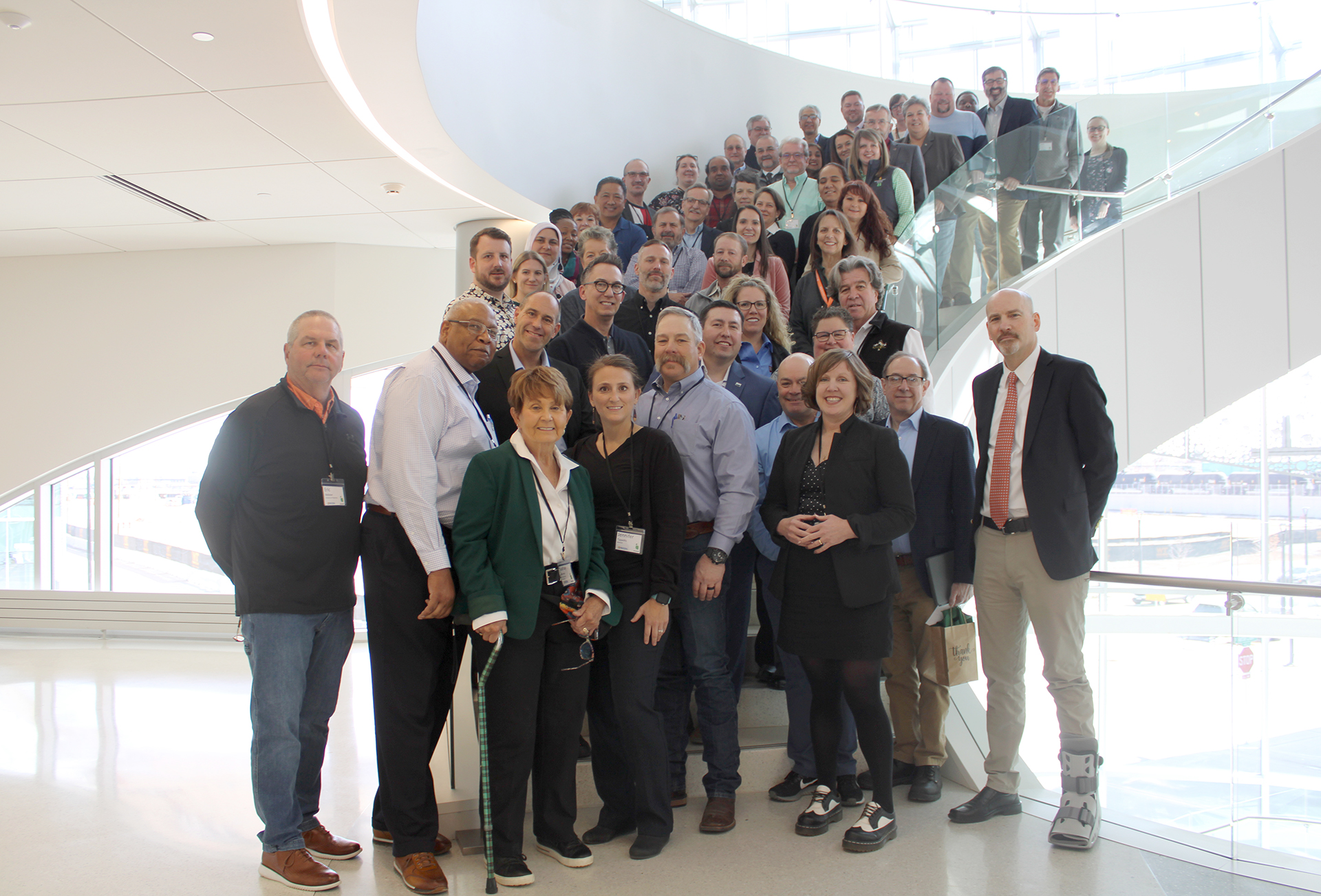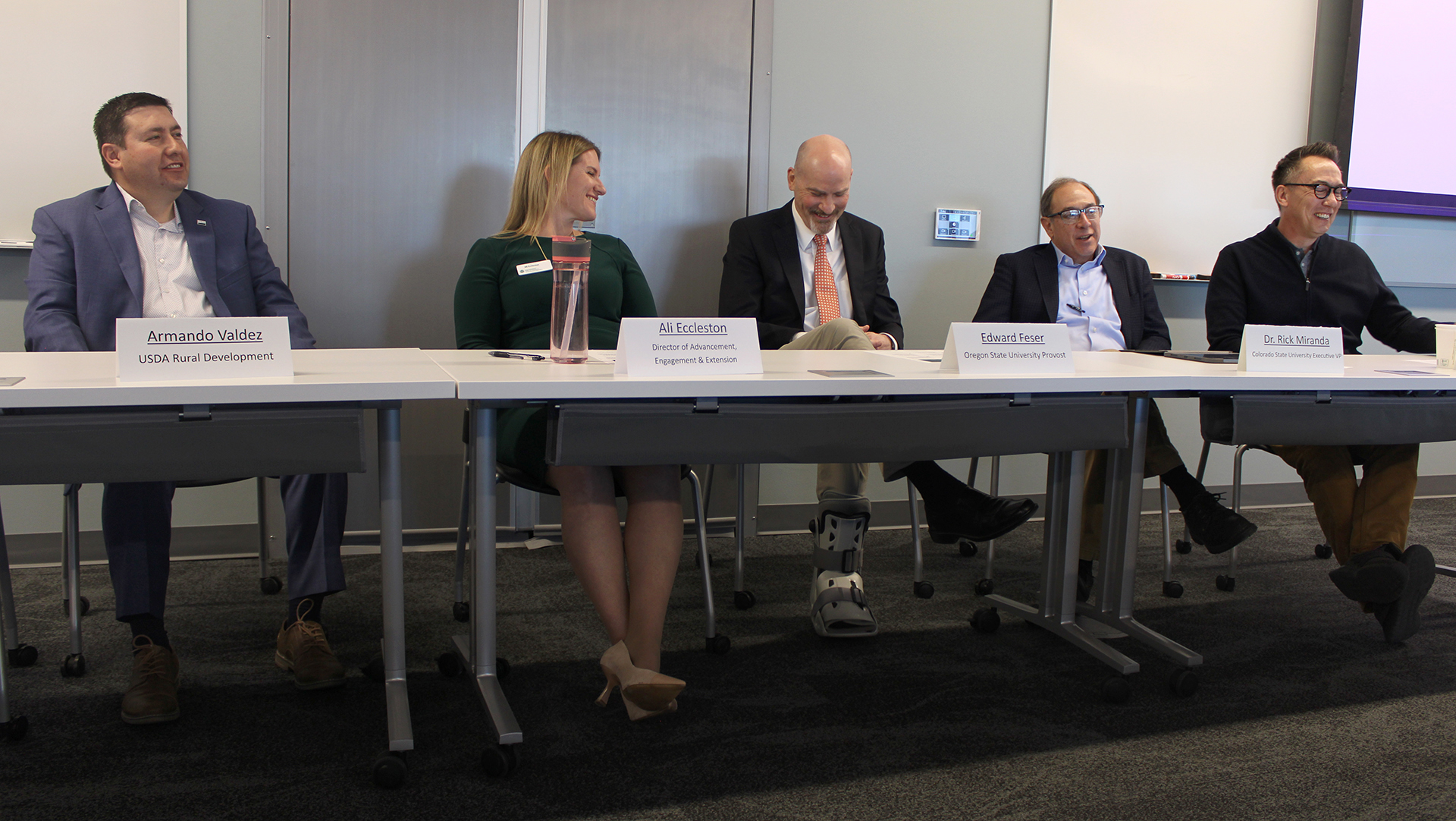
Extension and Experiment Station leaders from across the U.S. West gathered March 27-30 at Colorado State University’s Spur campus in Denver to connect and collaborate on the future of the land-grant mission.
Representatives from 13 states and four Pacific territories and U.S. protectorates attended the joint meeting of the Western Extension Directors Association and Western Association of Agricultural Experiment Station Directors.
A fitting location for the meeting, Spur was held up as an example of the future of the land-grant mission. Spur’s mission and agricultural roots parallel those of land-grant universities, which are tasked with sharing knowledge and research generated at the university with communities across the state and making education accessible for all.
As part of the meeting, an expert panel addressed challenges and opportunities for land-grant universities today. Among the challenges discussed were shifts in funding that have left universities seeking new sources of revenue, a rural-urban divide and changing perceptions toward higher education. Panelists shared their insights and initiatives for moving the land-grant mission forward.
Future of the Land-Grant University panelists:
- Jim Bradeen, associate vice president for CSU Spur Strategy.
- Ali Eccleston, managing director of Advancement for CSU Engagement and Extension and CSU Libraries.
- Edward Feser, provost and executive vice president of Oregon State University.
- Rick Miranda, CSU Fort Collins executive vice president, currently on leave as CSU System chief academic officer.
- Armando Valdez, vice chair of the CSU System Board of Governors and USDA rural development state director for Colorado.

Entrepreneurial spirit
Feser said land-grant universities need to be more entrepreneurial and find ways to generate revenue while staying aligned with their mission.
“What we want is a portfolio of initiatives, some of which fail and some of which succeed,” Feser said. “If everything works, you’re not pushing the envelope hard enough.”
The economy is changing – it’s increasingly digital, knowledge-based and globalized – and land-grant universities need to keep pace, Feser said. He said OSU is working to help ensure every community across the state is able to prosper in the new economy.
“We’re not the only solution,” he said, “but I think we have to be an important part of that solution.”
Bridging the rural-urban divide
Valdez explained that the land-grant mission has been part of the fabric of rural communities for 160 years. Valdez, who is also a farmer and rancher in the San Luis Valley, has noticed a rural-urban divide that land-grant universities can help bridge.
“I see that there is a divide, and not because of any animosity,” Valdez said. There’s a lack of understanding of the relevance of each type of community, he added.
Part of the issue – familiar to the Western audience – is the frontier landscape, he said. “Not only is there a cultural divide, but there’s also a geographic, physical divide.”
Valdez called Spur a connecting point that brings rural communities to an urban campus that also promotes rural life and activity.
Opening doors
Eccleston explained that Land-grant universities open the door to opportunity.
“We all have a different educational journey,” she said. “Extension and our ag experiment stations are part of that journey for people, wherever they are, whether they’re in a rural or urban community.”
Eccleston is focused on raising funds but also bringing together resources to support the land-grant mission.
“Resources aren’t just our budgets, they’re not just our dollars,” she said. “People and partnerships are crucial resources, too.”
Eccleston shared a success story about a rural community where Extension, local government, nonprofits, and a community college have partnered to develop an education center. The center will exemplify a successful collaboration that makes education more accessible.
Shifting higher-ed landscape
The panelists discussed the changing perspectives toward higher education and the importance of providing interdisciplinary, inclusive, and lifelong learning opportunities.
“I see Spur and our approaches here as an evolution of the land-grant promise,” Bradeen said. “I think it is exactly what higher education needs right now.”
Bradeen said educational flexibility is key, adding that Spur is changing how and where education can be accessed, and expanding who gets to participate in a life-changing education.
“While we lean into our traditional courses and degree programs and celebrate the impact that the land-grant university has had in transforming lives, we also recognize that educational flexibility includes alternatives or supplements to our traditional degree programs,” he said.
Bradeen and Miranda talked about the innovation ecosystem; industry, nonprofit and government collaboration; and lifelong learning opportunities that take place in Spur’s three buildings: Vida, Terra, and Hydro, based on grand challenges in health, food, and water.
“These buildings are not dedicated to disciplines,” Miranda said. “They’re dedicated to issues society is facing. That interdisciplinary approach is how we need to train students.”
The panel coalesced around the idea that land-grant universities must adapt to outside forces while maintaining the mission on which they were founded – serving the entire state through education, research, and outreach.
“Colorado State is not just a square-mile in Fort Collins,” Miranda said. “Our campus is the state of Colorado.”